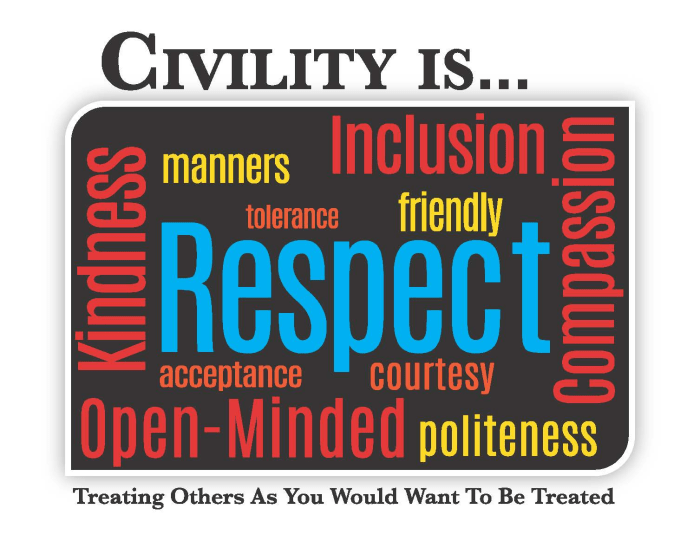Culture of civility creating a harassment-free workplace – Culture of Civility: Creating a Harassment-Free Workplace delves into the essential elements of fostering a respectful and inclusive work environment, exploring the concept of civility, identifying and addressing harassment, and implementing effective strategies to promote respect and inclusion. This comprehensive guide provides valuable insights and practical guidance for organizations seeking to create a workplace free from harassment and discrimination.
A culture of civility is fundamental to establishing a positive and productive work environment. It encompasses behaviors such as respectful communication, empathy, and consideration for others. By fostering a culture of civility, organizations can create a workplace where individuals feel valued, respected, and safe.
Defining a Culture of Civility
A culture of civility in the workplace is characterized by mutual respect, open communication, and professional conduct. It promotes a work environment where individuals feel valued, respected, and safe. Behaviors that contribute to a civil work environment include:
- Using respectful language and tone
- Actively listening to others
- Avoiding interruptions and disrespectful gestures
- Valuing diversity and inclusivity
- Resolving conflicts respectfully
Fostering a culture of civility in the workplace has numerous benefits, including:
- Increased employee morale and productivity
- Reduced absenteeism and turnover
- Improved customer satisfaction
- Enhanced reputation and brand image
Identifying and Addressing Harassment

Harassment is any form of unwelcome or offensive behavior that creates an intimidating, hostile, or humiliating work environment. It can take various forms, including:
- Verbal harassment (e.g., offensive jokes, slurs)
- Physical harassment (e.g., assault, unwanted touching)
- Sexual harassment (e.g., quid pro quo, unwanted sexual advances)
- Cyber harassment (e.g., online bullying, threats)
Harassment is illegal and unethical. It can have severe consequences for both the victim and the perpetrator, including legal liability, loss of employment, and damage to reputation.
It is crucial for organizations to have clear policies and procedures in place for identifying and reporting instances of harassment. Employees should be educated about their rights and responsibilities, and encouraged to speak up if they experience or witness harassment.
Creating a Harassment-Free Workplace

Creating a harassment-free workplace requires a multifaceted approach. Organizations should:
- Develop and implement clear policies and procedures to prevent and address harassment
- Establish clear consequences for engaging in harassing behavior
- Provide training programs to educate employees about their rights and responsibilities
- Encourage open communication and collaboration among employees
- Provide resources and support to employees who experience or witness harassment
By taking these steps, organizations can create a work environment where employees feel safe, respected, and valued.
Promoting Respect and Inclusion
Fostering a culture of respect and inclusion is essential for preventing harassment. Organizations should:
- Value diversity and inclusivity
- Encourage open communication and collaboration
- Provide resources and support to employees from underrepresented groups
- Address and challenge bias and discrimination
By creating a work environment where all employees feel welcome and respected, organizations can prevent harassment and create a more productive and positive workplace.
Measuring and Evaluating Progress: Culture Of Civility Creating A Harassment-free Workplace

It is important to measure and evaluate the effectiveness of anti-harassment initiatives. Organizations should:
- Establish metrics to track the number of harassment complaints and incidents
- Conduct regular surveys and focus groups to gather feedback from employees
- Make adjustments to policies and procedures as needed to improve outcomes
By regularly evaluating progress, organizations can ensure that their anti-harassment initiatives are effective and that they are creating a harassment-free workplace.
FAQ Insights
What are the key elements of a culture of civility?
A culture of civility is characterized by respectful communication, empathy, consideration for others, and a commitment to fostering a positive and inclusive work environment.
How can organizations identify and address harassment in the workplace?
Organizations can identify and address harassment by establishing clear policies and procedures, providing training to employees, and creating a reporting system that allows individuals to report incidents of harassment.
What are the benefits of promoting respect and inclusion in the workplace?
Promoting respect and inclusion in the workplace creates a positive and supportive work environment, enhances employee morale, and fosters innovation and collaboration.